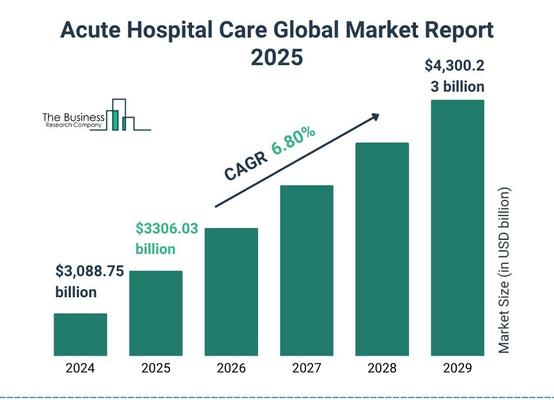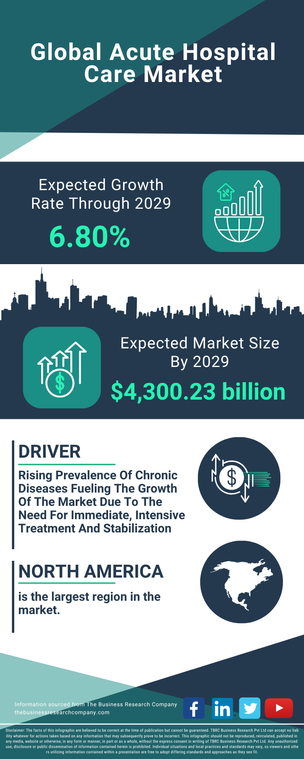America’s Most Obese and Overweight Cities
Author(s): Scott Douglas Jacobsen
Publication (Outlet/Website): The Good Men Project
Publication Date (yyyy/mm/dd): 2025/04/23
Obesity remains a major public health concern in the U.S., affecting 42% of adults and contributing to chronic diseases like diabetes and heart disease. WalletHub analyst Chip Lupo discusses a study identifying McAllen, Texas, Knoxville, Tennessee, and Shreveport, Louisiana, as cities with the highest obesity rates. Factors include diet, economic challenges, and lack of physical activity. Lupo highlights the role of public policies, food accessibility, and misinformation in shaping health outcomes. He also notes that obesity burdens healthcare systems and ties into broader issues like lifestyle choices and crime rates, emphasizing the need for systemic changes to combat the crisis.
Scott Douglas Jacobsen: March is National Nutrition Month, and obesity remains a significant public health challenge in the United States. According to the Centers for Disease Control and Prevention (CDC), approximately 42% of U.S. adults are classified as obese, a figure that has been steadily rising over the past few decades. Obesity contributes to numerous health complications, including heart disease, type 2 diabetes, and high blood pressure, leading to increased healthcare costs and a greater burden on the medical system. Given the seriousness of this issue, WalletHub, a personal finance website, has conducted a comprehensive analysis to determine the most overweight and obese cities in the country. Joining us today is Chip Lupo, an analyst at WalletHub who has shared insights on this topic with us before. Chip, thanks for being here again.
Chip Lupo: Yes, definitely, Scott.
Jacobsen: Your latest study focuses on the most overweight and obese cities in the U.S. for 2025. It’s important to clarify that we are not using these terms in a judgmental way. Instead, we are approaching this as a data-driven analysis to understand regional health trends and the economic implications of obesity better. The study evaluates factors such as obesity rates, physical inactivity, and the prevalence of obesity-related health conditions like diabetes and hypertension.
One of the key findings is that McAllen, Texas, has the highest share of obese adults and the highest percentage of physically inactive adults. Knoxville, Tennessee, stands out with the largest proportion of adults diagnosed with diabetes, while Shreveport, Louisiana, has the highest share of adults suffering from high blood pressure. These statistics highlight how obesity and related health issues are not evenly distributed across the country but tend to cluster in specific regions. You know this country better than I do, although I am here now. What is going on in McAllen, Knoxville, and Shreveport that contributes to these high obesity rates?
Lupo: Well, Scott, if you look at not only those three cities but also many of the top-ranking locations on your list, you will notice a strong geographical pattern. Many of these cities are concentrated in the Deep South, where obesity rates tend to be significantly higher than in other parts of the country. For example, my hometown of Columbia, South Carolina, ranks 18th in the study, and similar factors are at play in many of these areas.
One of the biggest contributors is diet. In much of the South, traditional foods are often high in fat, fried, and heavily processed. While culturally rich, Southern cuisine includes staples such as fried chicken, biscuits and gravy, sweet tea, and deep-fried seafood, all of which contribute to excessive calorie intake. Additionally, economic factors play a role—many lower-income communities have limited access to fresh, healthy foods, making it more convenient and affordable to opt for fast food or processed meals.
There is also a historical and systemic health component. Many Southern states have some of the highest rates of cardiovascular disease, stroke, and diabetes in the country. South Carolina, for example, ranks high in heart disease-related deaths. This is partly due to long-standing dietary habits, limited healthcare access, and lower preventive care rates in some areas. The lifestyle in these regions can also be more sedentary, with fewer people engaging in regular physical activity, exacerbating the problem.
What stands out in this analysis is that obesity is not just a personal health issue but also an economic and societal challenge. Rising obesity rates contribute to increased healthcare costs, putting additional pressure on insurance providers, employers, and government programs like Medicare and Medicaid. Employers must account for higher healthcare expenses in their group insurance plans, and some companies are beginning to implement wellness programs or provide incentives for employees to adopt healthier lifestyles. Furthermore, dietary recommendations and public health campaigns are being adjusted to address this growing issue.
Another concerning factor is the intersection of obesity with other health risk behaviours. Smoking and excessive alcohol consumption further compound health risks, leading to even higher rates of chronic illness. When you combine poor dietary habits, physical inactivity, and substance use, you create a perfect storm for widespread health complications.
Jacobsen: So, Chip, given the economic and social consequences of obesity, what trends do you see in how cities and policymakers address this issue?
Lupo: That’s a great point, Scott. We are seeing more cities take proactive measures to promote healthier lifestyles. Some local governments are increasing access to parks and recreational spaces, improving infrastructure for biking and walking, and investing in public health campaigns to encourage better eating habits. Schools are also playing a role by revising meal programs to provide healthier options and educating students on nutrition from a young age.
One of the biggest shifts post-COVID has been the increase in dining out and reliance on fast food. During the pandemic, many people stopped cooking at home, and even as restrictions lifted, that habit persisted. Regardless of region, more Americans are eating on the go, relying on convenience foods often high in sodium, fat, and sugar. This trend is particularly noticeable in cities with high obesity rates, where the availability of fast food options far outpaces access to fresh groceries and nutritious alternatives.
The challenge is multifaceted. While individuals can make healthier choices, systemic changes are necessary to make those choices easier and more accessible. That means addressing food deserts, promoting nutrition education, and making healthy options more affordable. Until then, we will likely continue seeing high obesity rates in these cities and the associated health and economic consequences.
People are returning to restaurants, sometimes for all their meals. Fast food, in general, is not the healthiest part of the diet, although many chains are taking steps to offer healthier choices—largely to capitalize on that part of the market.
Jacobsen: And what about physical activity? Even in New York, where I am right now, there are plenty of green and open spaces. There are parks, and there are many opportunities to walk around the city rather than take transit or drive to the nearest location for a meal.
Jacobsen: What is happening on that level in terms of lifestyle choices?
Lupo: Well, many times, access to green spaces depends on where you live. Crime significantly affects whether people feel comfortable engaging in outdoor activities. Many people hesitate to go for walks, particularly in the pre-dawn or evening hours, due to safety concerns. This is especially true in cities like New York, where crime rates in certain areas can be high. That factor alone discourages many from incorporating more physical activity into daily routines.
Jacobsen: Do you find that even what people consider healthy is often mistaken? In other words, are there widespread misunderstandings about what makes a healthy lifestyle and what constitutes a healthy meal—where people believe they are making good choices, but in reality, they are not?
Lupo: Absolutely. Too many people are influenced by advertising, often without critically examining the claims being made. They see marketing campaigns that promise miraculous results from certain diets, dietary supplements, or over-the-counter medications. However, if they read the fine print or listen carefully, they would notice disclaimers stating that these outcomes are not typical. Unfortunately, people tend to latch onto these extreme cases as the norm, which leads to unrealistic expectations.
There is also a psychological factor at play. When people consume foods labelled as “diet” or “low-calorie,” they often compensate by eating larger portions, ultimately defeating the purpose. This is a common trap that many fall into without realizing it.
Jacobsen: Is the food pyramid itself flawed? Did it contribute to some of the dietary issues Americans face today?
Lupo: I would say “outdated” is probably the better word. For years, there have been discussions about restructuring the food pyramid to better align with modern nutritional science and contemporary lifestyles. The traditional model of three square meals a day is somewhat antiquated, and while it may still work for some, it does not necessarily fit today’s eating habits.
Additionally, we know much more about food composition than we did when the original food pyramid was introduced. There is increasing concern over genetically modified foods, high gluten content, and other dietary sensitivities. Food allergies are far more prevalent today than a generation ago, another factor that should be considered in nutritional guidelines. A more adaptive, evidence-based approach is needed to ensure dietary recommendations reflect scientific advancements and real-world eating patterns.
Lupo: But to your point, yes, the food pyramid definitely needs some retooling or restructuring to better align with modern society.
Jacobsen: You have three other studies—healthiest and unhealthiest cities, best and worst cities for an active lifestyle, and best and worst states for healthcare. If you can recall, what were the core findings from those that tie into this study?
Lupo: There are many correlations. Your best and worst cities for healthcare usually align with the cities where residents are most obese. These factors are interconnected.
If people don’t take care of themselves, their health will suffer, putting a strain on the healthcare system. In states like South Carolina, where heart disease and adult diabetes are prevalent, hospitals and clinics can become overwhelmed. Additionally, in many rural states with lower-income populations, healthcare systems are already underfunded, making it even more challenging to address widespread health issues. This adds another layer of complexity to the crisis.
Jacobsen: Alright, man. I think that’s it for today.
Lupo: Thank you. Take care.
Jacobsen: You too, Scott. Bye.
Last updated May 3, 2025. These terms govern all In Sight Publishing content—past, present, and future—and supersede any prior notices. In Sight Publishing by Scott Douglas Jacobsen is licensed under a Creative Commons BY‑NC‑ND 4.0; © In Sight Publishing by Scott Douglas Jacobsen 2012–Present. All trademarks, performances, databases & branding are owned by their rights holders; no use without permission. Unauthorized copying, modification, framing or public communication is prohibited. External links are not endorsed. Cookies & tracking require consent, and data processing complies with PIPEDA & GDPR; no data from children < 13 (COPPA). Content meets WCAG 2.1 AA under the Accessible Canada Act & is preserved in open archival formats with backups. Excerpts & links require full credit & hyperlink; limited quoting under fair-dealing & fair-use. All content is informational; no liability for errors or omissions: Feedback welcome, and verified errors corrected promptly. For permissions or DMCA notices, email: scott.jacobsen2025@gmail.com. Site use is governed by BC laws; content is “as‑is,” liability limited, users indemnify us; moral, performers’ & database sui generis rights reserved.
#chronicDiseases #foodAccess #obesityRates #physicalInactivity #publicHealth







